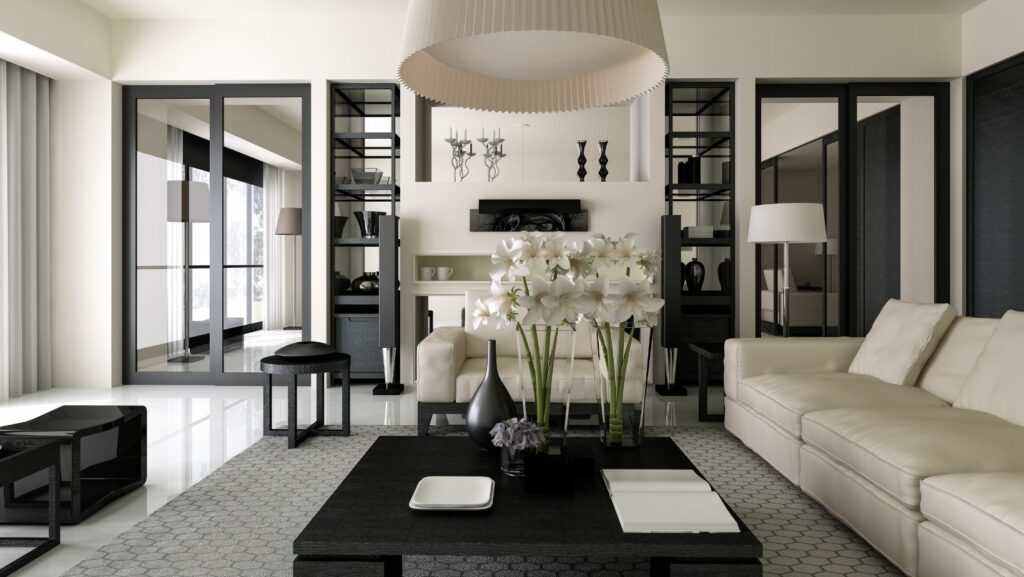Line in Interior Design
Lines play a fundamental role in interior design, influencing how a space is perceived and experienced. There are three primary types of lines commonly used in interior design: vertical, horizontal, and diagonal. Vertical lines, such as tall bookshelves or floor lamps, can add a sense of height and strength to a room. On the other hand, horizontal lines, like long countertops or low furniture, create a feeling of stability and tranquility. Diagonal lines, found in elements like staircases or slanted ceilings, introduce movement and dynamism to a space. The strategic use of these lines can significantly impact the mood and atmosphere of a room.
Different types of lines can evoke various psychological effects in interior design. Vertical lines, by drawing the eye upward, can create a sense of grandeur and sophistication. They instill a feeling of strength and stability, making a space appear more formal and powerful. Horizontal lines, in contrast, promote a sense of calmness and relaxation. They impart a feeling of restfulness and stability, ideal for areas where one seeks comfort and peace. Diagonal lines introduce a sense of energy and movement, adding excitement and a dynamic touch to the environment. Understanding the psychological effects of each type of line is crucial for designers to create spaces that resonate with the desired emotional responses.
Incorporating Lines into Home Décor

The significance of lines in interior design lies in their ability to shape the look and feel of a space, impacting both its aesthetics and functionality. Various types of lines, such as vertical, horizontal, and diagonal, play a crucial role in eliciting different emotions and establishing the ambiance of a room. By strategically incorporating these lines, designers can direct focus, add visual intrigue, and delineate areas within a room, turning an ordinary space into an extraordinary one. Vertical lines project elegance and sophistication, while horizontal lines promote a sense of tranquility and stability. On the other hand, diagonal lines introduce dynamism and movement, emphasizing the psychological impact of each line type in crafting environments that evoke specific emotional responses.
In interior design, lines are a fundamental element for defining spaces within a room. By employing vertical lines, designers can make a room appear taller, adding a sense of grandeur and sophistication. Horizontal lines, on the other hand, can create the illusion of a wider space, fostering a feeling of calmness and balance. Diagonal lines introduce a dynamic element, instilling energy and movement into the room. Combining these line types strategically helps delineate areas, create visual flow, and establish boundaries, enhancing the overall layout and functionality of a space.
Tips for Utilizing Lines Successfully in Interiors

When considering the natural lines of a room, designers should first analyze the architectural elements present, such as windows, doorways, and built-in features. These structural lines can set the foundation for the design scheme by guiding the placement of furniture and decor items. By aligning furniture along these existing lines, one can enhance the sense of flow and cohesion in the space. Additionally, observing the direction of natural light can influence the perception of lines within a room, enhancing the visual dynamics based on how light interacts with surfaces and objects.
To accentuate the lines within a room effectively, strategic placement of art and decor elements is crucial. When selecting artwork or decorative pieces, designers should consider how the lines within these items interact with the existing lines of the space. Contrasting or complementing the predominant lines in a room can create visual interest and focal points. Placing artwork at eye level on walls following the natural lines of the room can draw attention to specific features and enhance the overall design coherence. By strategically incorporating decor elements that echo or contrast with the room’s inherent lines, designers can elevate the visual impact and create a harmonious interior aesthetic.
Understanding the role of lines in interior design is crucial for creating spaces that evoke specific emotions and atmospheres. By strategically incorporating vertical and horizontal lines, as well as a mix of curved and angular lines, designers can achieve a harmonious balance that adds depth and character to any room. Each design style, whether minimalist, contemporary, or traditional, offers unique opportunities to play with lines and shapes to achieve the desired aesthetic. By paying attention to the natural lines of a space and intelligently placing decor elements, designers can enhance the visual appeal and cohesion of a room. Mastering the art of utilizing lines effectively is a powerful tool in crafting memorable and impactful interior designs.
